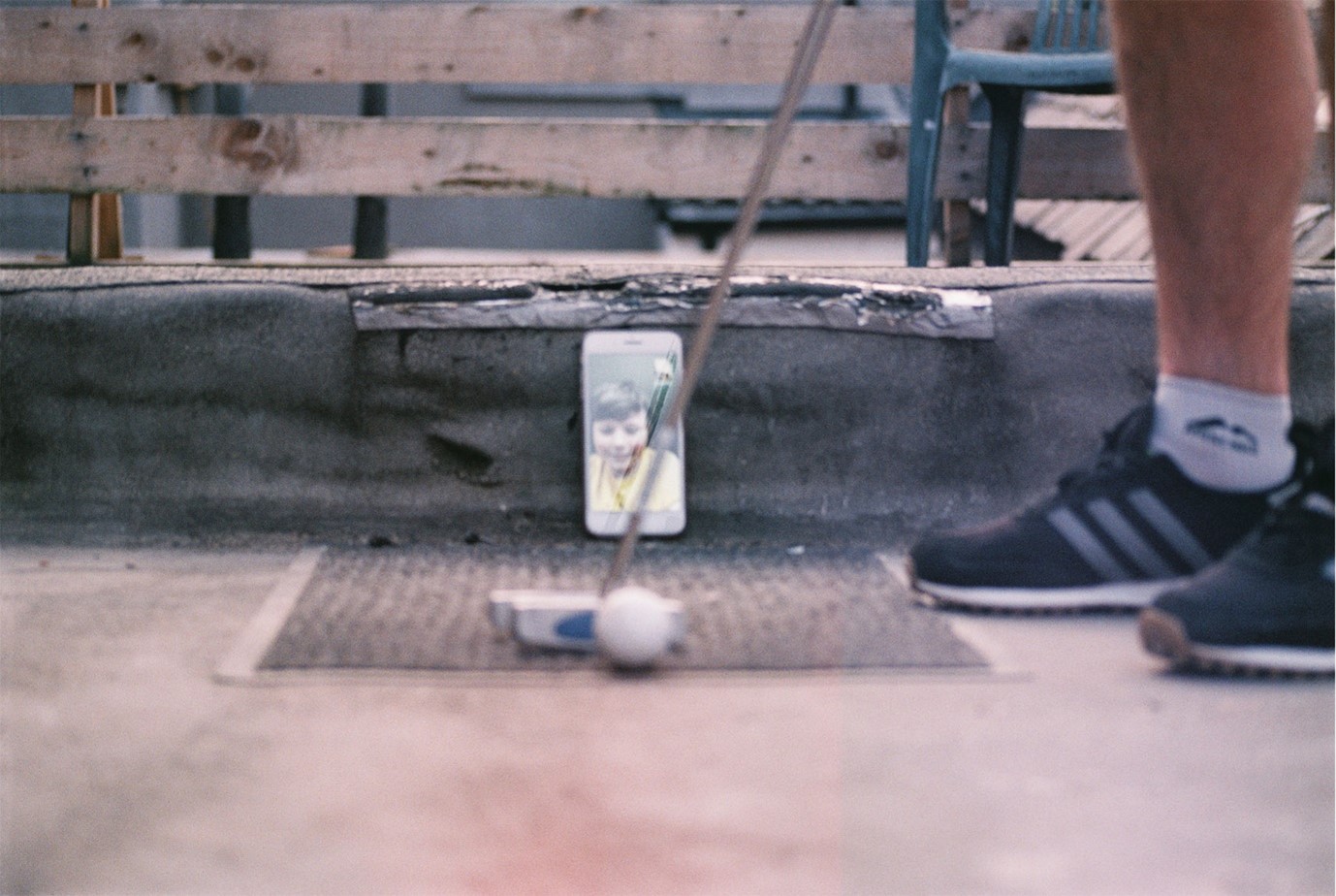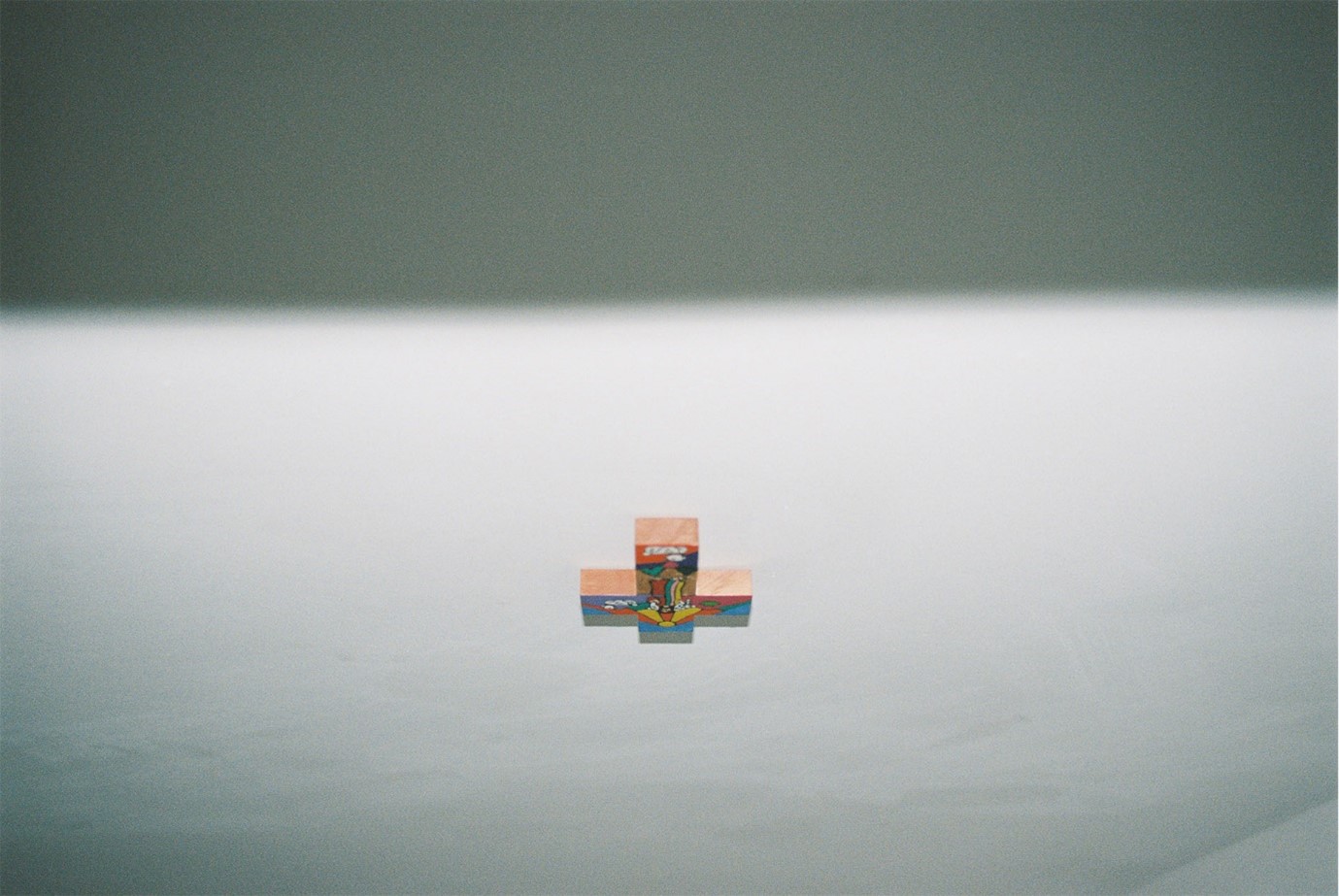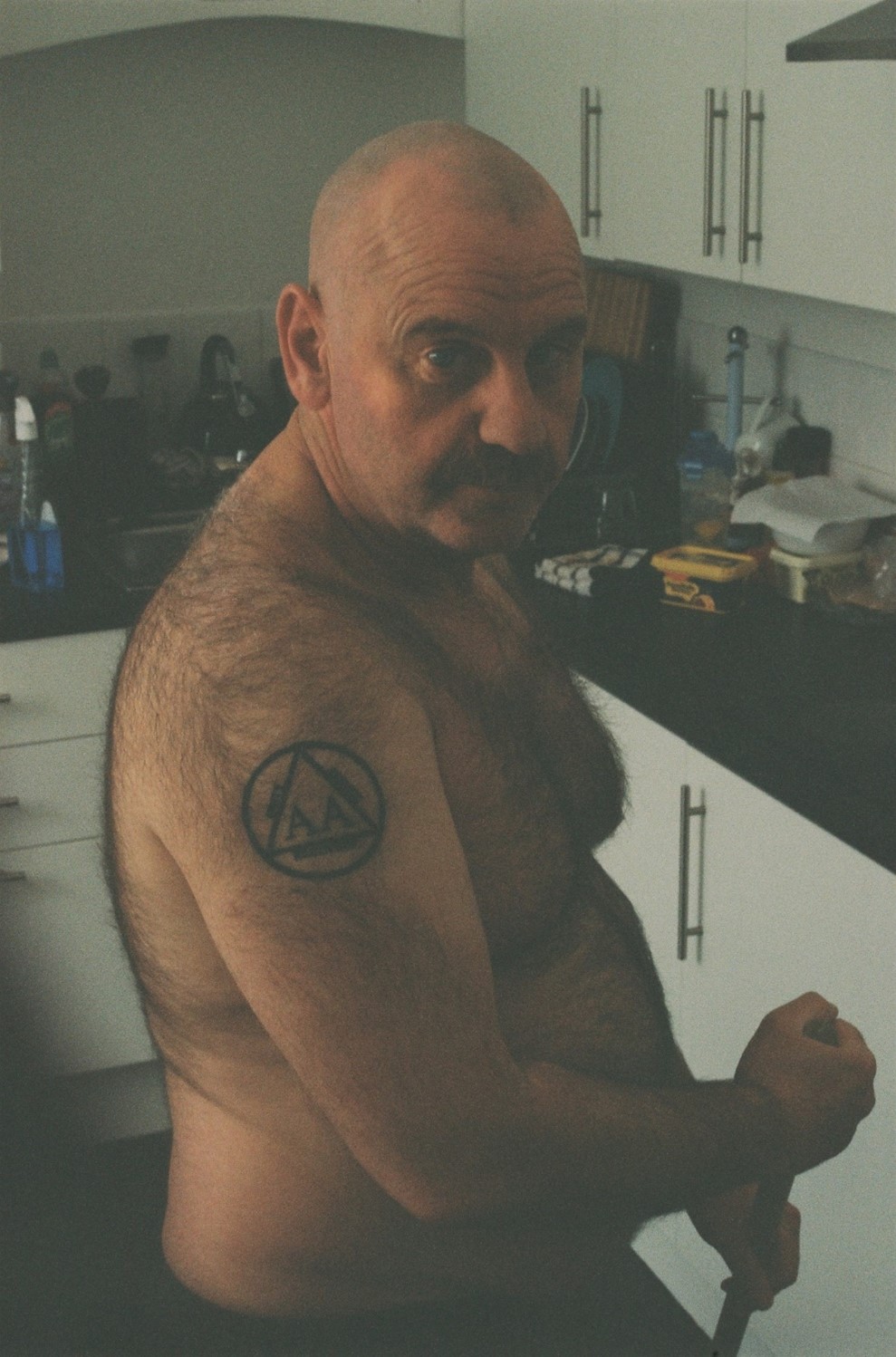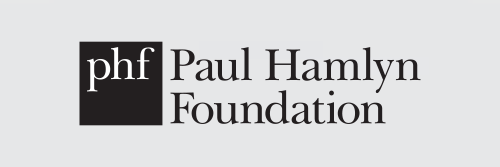


A Spotlight On… Sam Batley
Sam Batley’s socially engaged photography with Damien John Kelley House, One Day At A Time Boys, focuses on creativity and connection for active, open-minded recovery. Described as ‘socially engaged art with a twist’, Batley lives with the participants in his art practice in an abstinence-based recovery home in Wavertree, Liverpool. Armed with 35mm cameras, Batley and the Boys’ creative practice provides valuable expressive self-discovery for the residents, aiding their recovery and providing a unique outlet for creative expression. Interview by Lauren Stephens.
Lauren Stephens: How did you begin this practice? Is this your first delve into photography or had you done it in the past?
Sam Batley: It’s not the first time I had done photography. I’d taken photos for about eighteen months before I came to Liverpool from Yorkshire in September 2019. I started volunteering at Open Eye Gallery and heard about socially engaged practice there. In general, Open Eye Gallery did a lot for me and my confidence in being able to understand what it is that I do or why I do it.
What specifically did Open Eye Gallery offer for you and this socially engaged practice?
I always felt like, since I’ve not been to art school, I didn’t really know what it was to be a photographer or what it was to be an artist. What Open Eye Gallery has done, really, has given me belief in myself and I’ve been able to speak and have faith in my voice rather than my own internal dialogue squashing it, that my voice isn’t valid, like ‘What do I know? Who do I think I am?’ This has all come out in this One Day At A Time Boys project.
Tell me about Damien John Kelley House and your project with it, One Day At A Time Boys.
Damien John Kelly House has been massive in this journey. It’s the place where the journey has happened. It’s a recovery living centre for men who are in recovery from drugs and alcohol. We base our recovery in sport, art and culture. When I came to the house, I was messed up mentally, physically: gone. So when I talk about photography and how it helps in this reflective journey or self-discovery, for me, the self-discovery has come through recovery and what you learn about yourself.
What does recovery mean to you?
Life. Recovery is life. Recovery is the opposite to addiction. Addiction is death. Addiction isn’t life, because you exist in a very small world, a small chasm of what life could be. Recovery is the opposite of that. I can talk to you, now. I can go out and volunteer at a gallery, I can do all the things I’ve ever wanted to. I can be involved in life. I’m not in a mess, I’m not paranoid, I’m not depressed, I’ve slept.
How do you think recovery has changed the images you’ve taken? If you compared photographs you took pre-recovery and photographs you’ve taken now, in recovery.
Massively. It’s like a different person. I’m not in a position to take the photos I used to take, because that’s not my world anymore. The photos that I was taking then, maybe there’s a similarity for why I’m taking them, but it’s a different person behind the lens. The photos I’ve taken now, there’s much more thought, much more feeling. I feel like creativity and photography have become much more of a constant in my life where I can put time into it, I have the confidence in myself to be able to do projects like what I’ve been doing with the lads in the house, that could never have happened before.
So let’s talk about the selected photographs from the One Day At A Time Boys project. The first photo is by Ian, a dynamic shot of a FaceTime call between father and son.
Ian was one of the first to join the photography group when we started it during lockdown. He came from a military background and photography wasn’t something that had come into his life. Once he had a go at photography he really got into it, and became really inquisitive, like asking questions all the time about depth of field. When he started, he was into taking photos of runners / people running. Through that he got onto motion and this photo is him keeping up with experimenting and trying mad stuff: he just had an open mind with it from the get-go. It’s quite a mad angle that he’s taken in this photo, it’s a mad place to think to take a photo. That’s the beauty of it. No one has ever told us, ‘this is how you take a photo, you should take it like this, from this place, at this exposure, at this f stop’. None of this matters. If you were saying to somebody, ‘you’ve got an interesting story to tell, this will help you tell it, this is how you use it,’ that’s how you get mad photos like this. It’s someone FaceTiming and playing golf, and Ian’s out laying on the floor.
What do you think this photo says about Ian and his own path to recovery?
Eagerness and control. Being able to control the space by being able to show a space that might not be orthodox. I don’t want to answer for him, but it is something that gives pride for us. When I started taking photos, I sort of had an interest. And it grows from there.
So this creative process helps with recovery.
Massively, 100%. For you to come into recovery to begin with, stuff has got to be messed up in your life. Stuff has got to be really, really bad. It’s a complete crisis of reality or your existence, because you have to admit, whatever I’m doing is wrong. I cannot carry on living like I am living. And that way that you have been living, you don’t believe that there’s anything outside of that. It brings about a profound reflection. Creativity, I believe, can help with that. Some of the lads might not have had the belief that you can be creative, but willingness comes with recovery. Creativity through recovery helps you to try something you would have never ever tried before. You think about things differently. I feel like we all have the ability to be creative, from a young age, snapping sticks, drawing on walls, digging in dirt. We’ve all done that. That’s all photography is: digging in dirt. For that journey to take place, the photos have that feeling attached to it.
I think this photo in particular shows a kind of closeness. There is a degree of brotherhood to be able to be in that space together, with a man talking to his son. That’s why it feels so intimate, because it is intimate. That space has to be safe for that to come out.
Now let’s move on to the second photograph, my personal favourite. This photo, of a crucifix, is by Wayne. Can you discuss this image further?
I’ve known Wayne since my first day at Damien John Kelly House. He’s the longest member of the family that I’ve known and he’s been a massive part of my recovery. I’ve got a really close bond with Wayne, and he’s always up for trying new stuff. That’s the big positive about recovery, once you’ve got this feeling that stuff can be different, you say let’s have a go, let’s try this, let’s try that. So Wayne had already started doing some creative stuff before the photography project. Maybe not as fanatical as Ian, but the photos that Wayne has taken are taken when they need to be taken. It’s not that he’s gone out and decided to take a bunch of photos, but when that feeling must have arisen, that’s when he’s taken them. Like this photo we’re discussing now.
Wayne, by his own admission, has had his battles with his mental health, in and outside of recovery, and he’s quite a religious man. So that photo, he was in a particularly dark spot. The photos he’s taken before were more photos of where he’s from, so he was revisiting his past. Obviously his mental health and depression is a part of that. So when he’s taken that photo of the crucifix, he didn’t even tell me he’d taken it. When Ian takes photos, he’s telling me all about them, but Wayne not necessarily. Once we had developed it and we did a group about the photos, Wayne said, ‘that’s what my depression sees’. With your mental health, you have to make that distinction between that depression in you, the part of you that wants to bring you down and tell you lies. For him to say that, ‘that’s what my depression sees’, I found that dead powerful. And he’s taken it when he’s lay in bed, the focus is perfect. It’s very personal, very intimate. That’s the first thing he sees when he wakes up. I think Wayne is a very honest person. I think that’s what comes across in his recovery and that’s what comes across in his work. When he showed up with his photo and said ‘this is what my depression sees’, he didn’t have to say anything else and I got it, in my gut, I got it.
Now let’s discuss the last photo, your portrait of Wayne. Why did you take this picture?
To be honest, it was a joke. He was shaving his beard off and left his moustache, so I was just taking a picture of his moustache. There was nothing serious to it. However, there’s strength in it, there’s no dressing up, it’s a bloke in a kitchen with his top off, just the everyday. I think it’s his eyes, he’s just looking straight down the lens at me, he’s unmoved by his current situation. I like how the photo turned out, there is a softness to the light.
What does this picture say about your path to recovery?
Meaningful connection. Again, recovery is the opposite of addiction, and in addiction it’s very hard to find meaningful connection. I was too twisted to trust or get close to somebody and recovery is the opposite of that, when you can trust, you can get close to somebody. So knowing Wayne since I came to Liverpool, he’s been there on my whole journey. I trust him wholeheartedly. So I think it reflects that. These guys that I live with now, I would have never interacted with. I think, for me to be in that space with him, there are not very many places that would allow that connection to take place. We’ve all got tales to tell, they just need telling.
Tell me about the future for this project and the One Day At A Time Boys.
I just received a grant with the Dream Fund to carry on with this project, so I bought eight cameras for the House and we’re going to go on a photo walk soon with them. With these cameras, now everyone in the house can have a voice. If I could just provide this for them, I’ll provide them the tool but I won’t tell them how they should do it. I don’t want to put any of my influence on their works. For Ian, and for Wayne and their photos, that’s not me, that’s them. That’s their voice. Some of the lads might take to it, some might not, but that’s not for me to decide. It’s just creating space where that can happen.
–
Images
Wayne and son golfing. Photograph by Ian. 35mm camera.
Wayne’s crucifix. Photograph by Wayne. 35mm camera.
Portrait of Wayne. Photograph by Sam Batley. 35mm camera.

